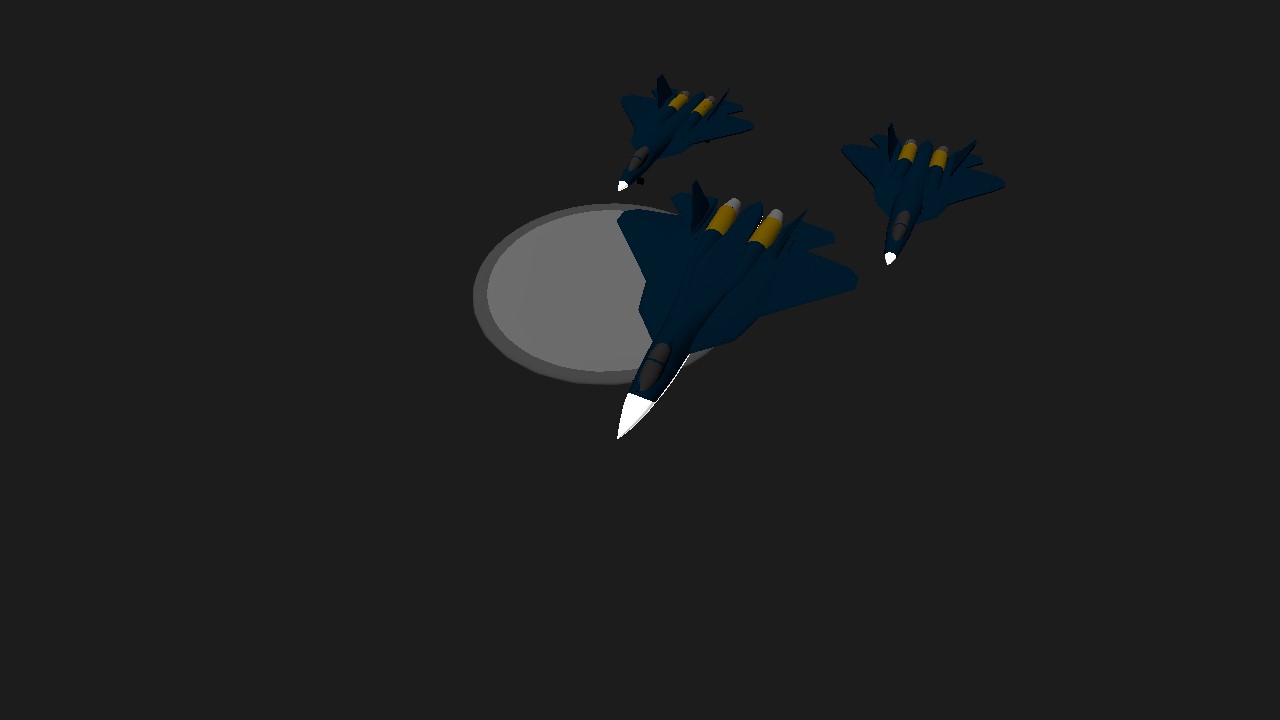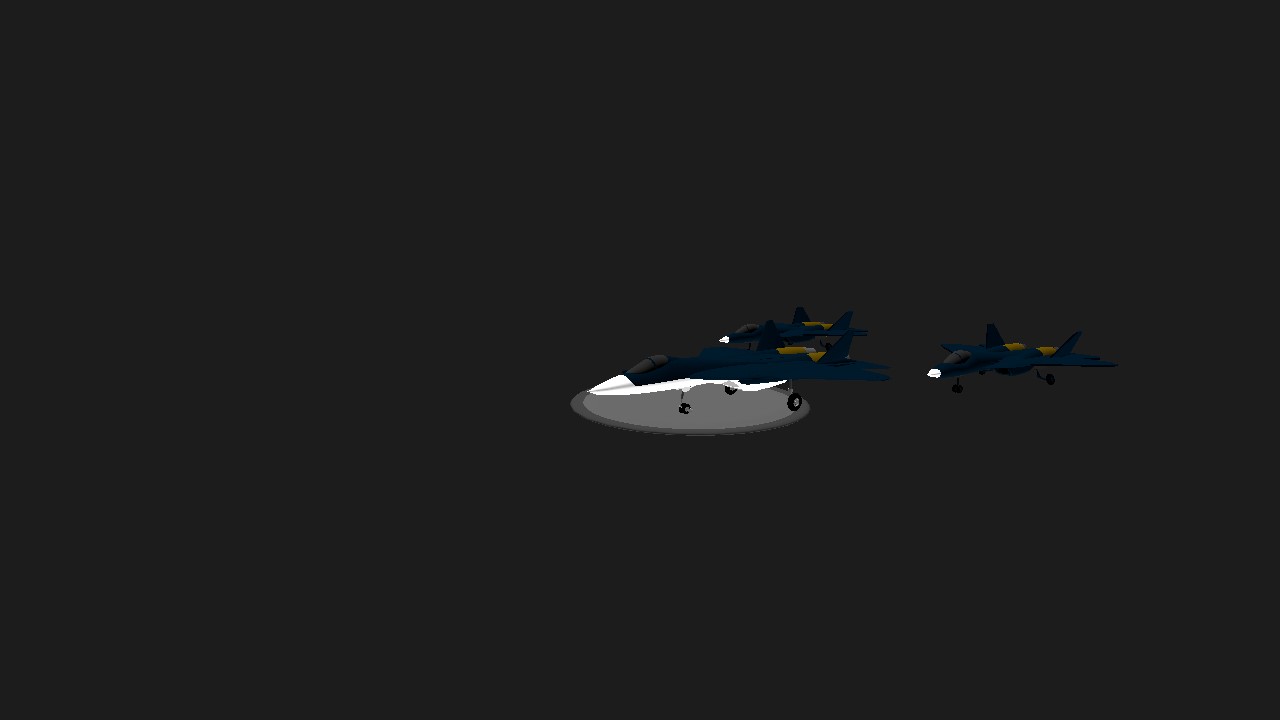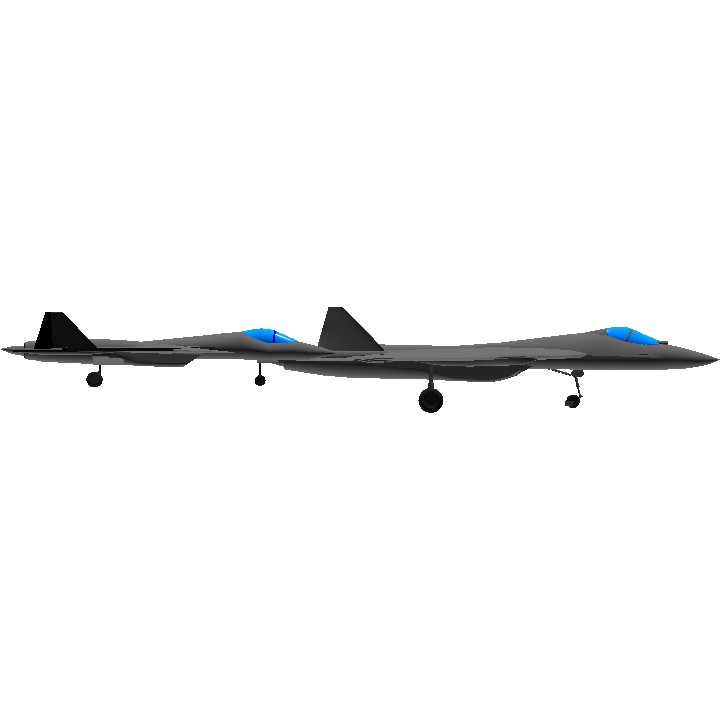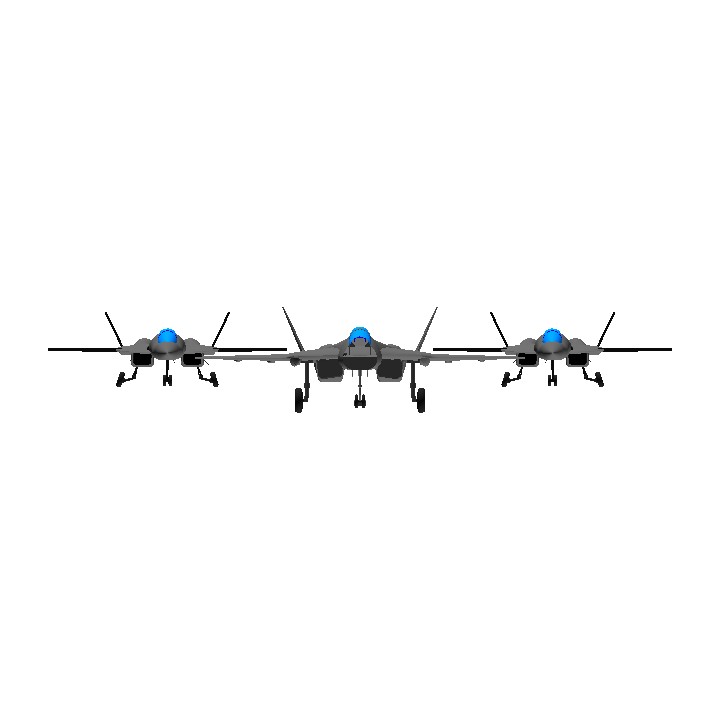The Sukhoi Su-57 (Russian: ????? ??-57; NATO reporting name: Felon)[6] is a twin-engine stealth multirole fighter aircraft developed by Sukhoi.[7] It is the product of the PAK FA (Russian: ??? ??, short for: ????????????? ??????????? ???????? ????????? ???????, romanized: Perspektivnyy Aviatsionnyy Kompleks Frontovoy Aviatsii, lit.?''prospective aeronautical complex of front-line air forces'') programme, which was initiated in 1999 as a more modern and affordable alternative to the MFI (Mikoyan Project 1.44/1.42). Sukhoi's internal designation for the aircraft is T-50. The Su-57 is the first aircraft in Russian military service designed with stealth technology and is intended to be the basis for a family of stealth combat aircraft.
The Su-57 is a fifth-generation multirole fighter aircraft and the first operational stealth aircraft for the Russian armed forces. In addition to stealth, the fighter emphasizes supermaneuverability in all aircraft axes, capacious internal payload bays for multirole versatility, and advanced sensor systems such as active phased-array radar as well as the integration of these systems to achieve high levels of automation.[25][87] In the Su-57's design, Sukhoi cited the Lockheed Martin F-22 as the baseline for a supermaneuverable stealth fighter, but addressed what the bureau considered to be the limitations, such as the inability to use thrust vectoring to induce roll and yaw moments, a lack of space for weapons bays between the engines resulting in insufficient payload, and complications for stall recovery if thrust vectoring fails.[88][89]
The aircraft has a wide blended wing body fuselage with two widely spaced engines and has all-moving horizontal and vertical stabilisers, with the vertical stabilisers canted for stealth; the trapezoid wings have leading edge flaps, ailerons, and flaperons. The aircraft incorporates thrust vectoring and large leading edge root extensions that shift the aerodynamic center forward, increasing static instability and maneuverability. These extensions have adjustable leading–edge vortex controllers (LEVCONs) designed to control the generated vortices and can provide trim and improve high angle of attack behaviour, including a quick stall recovery if the thrust vectoring system fails.[90] To air-brake, the ailerons deflect up while the flaperons deflect down and the vertical stabilisers toe inward to increase drag.[91] Although the majority of the structural materials are alloys with 40.5–44.5% aluminum alloys and 18.6% titanium alloys, the aircraft makes extensive use of composites, with the material comprising 22–26% of the structural weight and approximately 70% of the outer surface.[92][93]
Designed from the outset as a multirole aircraft, the Su-57 has substantial internal payload capacity that allows the carriage of multiple large air-to-surface ordnance.[88] Weapons are housed in two tandem main weapons bays in the large ventral volume between the widely spaced engine nacelles and smaller side bays with bulged triangular-section fairings near the wing root. Internal weapons carriage eliminates drag from external stores and enables higher performance compared to external carriage, as well as preserving the stealth shaping.[94][95]
The high degree of static instability (or relaxed stability) in both pitch and yaw, advanced KSU-50 flight control system, and canted thrust vectoring nozzles make the Su-57 departure-resistant and highly maneuverable in all axes and enables the aircraft to perform very high angles of attack maneuvers such as the Pugachev's Cobra and the bell maneuver, along with doing flat rotations with little altitude loss.[91][96] The aerodynamics and engines enable it to achieve speeds of Mach 2 and fly supersonic without afterburners (supercruise) giving a significant kinematic advantage and extends the effective range of missiles and bombs over previous generations of aircraft.[N 9][97] Combined with a high fuel load, the fighter has a supersonic range of over 1,500 km (930 mi), more than twice that of the Su-27.[91][98][99] An extendable refueling probe is available to further increase its range.
Specifications
General Characteristics
- Created On Android
- Wingspan 89.6ft (27.3m)
- Length 103.7ft (31.6m)
- Height 15.2ft (4.6m)
- Empty Weight N/A
- Loaded Weight 59,421lbs (26,953kg)
Performance
- Power/Weight Ratio 5.219
- Wing Loading 39.8lbs/ft2 (194.5kg/m2)
- Wing Area 1,491.5ft2 (138.6m2)
- Drag Points 10286
Parts
- Number of Parts 557
- Control Surfaces 10
- Performance Cost 2,758
Required Mods
-
Hispano-Suiza 20mm Automatic Aircraft Cannon
by 14rovi
Version 1.2 (12/28/2018 9:35:30 AM)
View Mod Page





